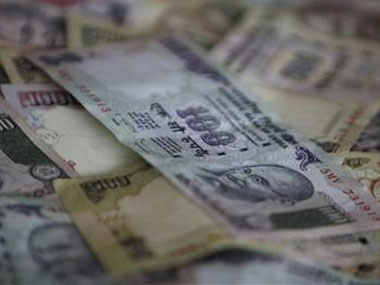Bond markets will have to wait until 30 July, 2013 for repo rate cuts by the RBI. The central bank is not likely to cut the repo rate in its 17 June mid quarter policy review statement given the current market conditions. However Government bond yields are not likely to rise much further from the current levels of 7.20% on the benchmark ten year bond the 7.16% 2023 bond given that the yields are already up 10bps from lows.
The reason why RBI will not cut the repo rate on 17June is the volatility in the INR. The INR is down over 6% against the USD over the last one month and is currently trading at record lows. The reasons for the INR fall are more to do with broad USD strength globally than any real domestic worries but the fact is that the RBI views a weak INR as a threat to the economy.
[caption id=“attachment_857411” align=“alignleft” width=“380”] The RBI Governor has commented that the CAD (Current Account Deficit) is too high for comfort and RBI does see this as a threat to INR stability[/caption]
The RBI Governor has commented that the CAD (Current Account Deficit) is too high for comfort and RBI does see this as a threat to INR stability[/caption]
The RBI Governor has commented that the CAD (Current Account Deficit) is too high for comfort and RBI does see this as a threat to INR stability. The prospects of the US Federal Reserve easing bond purchases will also weigh on the RBI’s mind given that global bond yields have gone up on such expectations. US ten year treasury yields are up by over 42bps over the month on expectations of improved economic scenario in the US.
RBI holding on to the repo rate this month does in no way suggest that the monetary easing is over. Domestic economic data is weak with GDP for 2012-13 coming in at decade lows, manufacturing index for May recording a fall and demand indicators such as vehicle sales looking weak. The fact that the government is maintain a high cash surplus with the RBI and that fiscal deficit for 2012-13 came in lower than budgeted at 4.9% of GDP against original estimates of 5.2% of GDP is positive for interest rates.
Government borrowing is unlikely to be higher than budgeted levels for this year and fiscal deficit can even come in lower than projected 4.8% of GDP if the government curbs expenditure.
Inflation has trended positively for bonds with WPI inflation trending at multi year lows and CPI inflation coming off sharply from double digit levels. Monsoons are expected to be normal and food price inflation is likely to be kept down.
RBI has cut rates in its last three policy reviews in January, March and May 2013. The central bank can hold back rate cuts in the face of INR volatility and once this volatility eases, RBI is likely to cut rates in the July policy review.
Arjun Parthasarathy is the Editor of www.investorsareidiots.com a web site for investors.
)